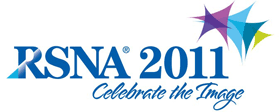
Abstract Archives of the RSNA, 2011
Amy Robin Deipolyi MD, Presenter: Nothing to Disclose
George Joseph Hunter MD, Abstract Co-Author: Nothing to Disclose
Ramon Gilberto Gonzalez MD, PhD, Abstract Co-Author: Nothing to Disclose
Leena M. Hamberg PhD, Abstract Co-Author: Nothing to Disclose
To evaluate the number of diagnostic findings and percentage of total radiation dose seen individually in the head, neck and chest parts of the CTA performed in the emergency room (ER) for acute stroke management.
Patients presenting with acute stroke who underwent CTA in the ER between 1/1/10 and 3/31/10 were evaluated. From the CTA images for each patient, the scan lengths for the head (vertex to C1), neck (C1 to C7) and chest (T1 to the lowest slice) parts were recorded using anatomical landmarks. The whole CTA dose-length-product (DLP) was taken from the dose report, and head, neck and chest region-specific DLP values were calculated as fractions of the total. Effective dose for each region was determined using region-specific DLP-to-effective dose conversion factors, and expressed as a percentage of the whole CTA effective dose. For each study the radiology report was reviewed to determine the presence of relevant findings in the head, neck and chest regions of the CTA individually. Relevant findings were: any vascular related pathology in the head; >50% stenosis in carotid or >70% in vertebral arteries in the neck; and thrombus, dissection or aneurysm in the aorta in the chest. The diagnostic yield per unit of radiation dose (mSv) for each region was obtained as the ratio of the number of patients with relevant findings to the effective-dose in the region. These values were then normalized to unity for the head portion.
102 patients (53 male, 49 female, aged 23 to 93 years with mean age 65 years) were evaluated. 54 patients had relevant findings in the head (53%), 35 in the neck (34%) and none in the chest (0%) part of the CTA. The percentages of effective dose from the whole CTA attributed to the head, neck and chest parts were 25%, 31% and 44% respectively. The diagnostic yields per mSv, relative to the head region, were 1.0, 0.5 and 0 for the head, neck and chest respectively.
Radiation in acute stroke CTA could be reduced by 44% by limiting scanning to the head and neck with very low probability of adversely affecting patient care, as the chest portion had low diagnostic yield in this patient population.
In the acute stroke setting, radiation from CTA of the head, neck and upper chest can be reduced by 44% without compromising patient care, simply by limiting scanning to the head and neck regions.
Deipolyi, A,
Hunter, G,
Gonzalez, R,
Hamberg, L,
Radiation Dose and Diagnostic Value of the Head, Neck, and Chest: Components of CT Angiography in the Acute Stroke Patient. Radiological Society of North America 2011 Scientific Assembly and Annual Meeting, November 26 - December 2, 2011 ,Chicago IL.
http://archive.rsna.org/2011/11006558.html

